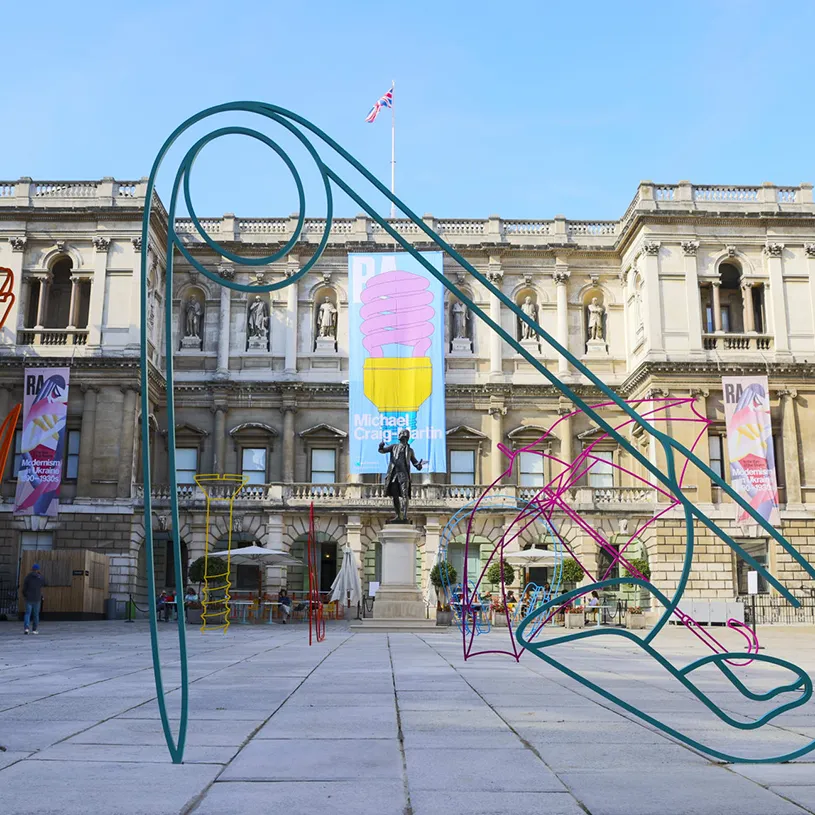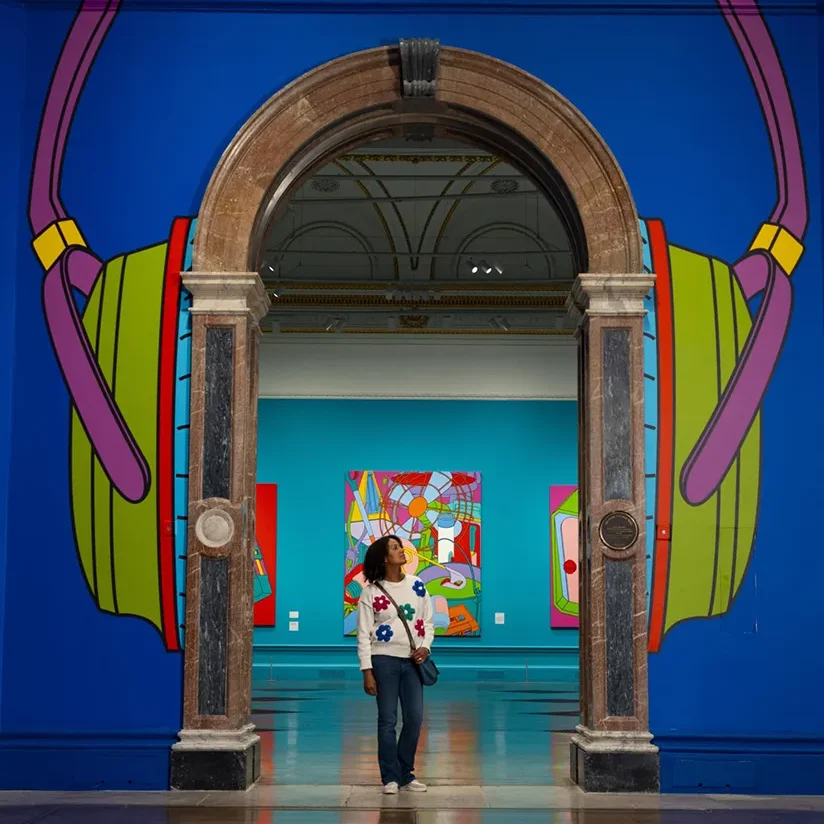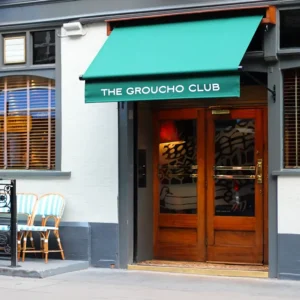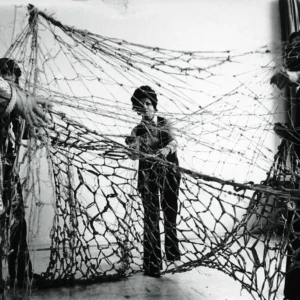Michael Craig-Martin, a major figure in British art, blends pop, minimalism, and conceptual influences with humor. His retrospective at the Royal Academy of Arts features early experimental pieces, vibrant large-scale paintings, monumental sculptures, and a dramatic site-specific installation.
The retrospective begins with early conceptual works that are minimal yet complex, featuring pieces like Box That Never Closes and An Oak Tree, which provoke existential reflections and philosophical inquiry.
After this introduction, the exhibition transforms into a vibrant and playful installation. The rooms are adorned in bold colors, including magenta, cerulean, and a dynamic aquamarine that shifts in tone based on the viewer’s perspective.
The exhibition continues with streamlined subject studies, including replicas of Old Masters and a series of Word Paintings that overlay letters with corresponding images, resulting in clever optical puns and a self-referential exploration of art history.
At the end of the gallery, an immersive digital work fills a cordoned-off area, featuring a twenty-minute animation and soundscape that incorporates over 300 objects collected over four decades. Experiencing this piece is akin to falling through a kaleidoscopic array of images into an unseen abyss.

Craig-Martin’s artwork is intentionally bright and banal, characterized by a clear separation between line and color. His self-portrait showcases exaggerated hues—orange eyebrows, turquoise hair, and green lips—against a vibrant pink background, offering a simplified representation.
In his work, everyday objects are rendered as graphic outlines against bold backgrounds of cobalt, emerald, yellow, and cerise. This technique creates a striking visual impact that captures attention while provoking a sense of disengagement.
The artist aims to evoke familiarity while crafting subjective, unfamiliar experiences. Although some audiences may find these objects mundane due to their prevalence, such boredom often reflects a saturation of commodities and a desensitization to them rather than a flaw in the artwork. This disinterest in familiar items, like iPhones and headphones, suggests a deeper commentary on the overwhelming presence of consumer goods in modern life.
Craig-Martin insists that art should be experienced, not interpreted, although curators attempt to impose meaning, suggesting that a 2021 arrangement of an airplane window, chaise longue, and syringe references COVID. Craig-Martin offers more explicit hints in works like Then and Now, juxtaposing modern items with older ones, along with a half-open closet whimsically labeled Pricks and a large depiction of “Love” next to a pink rubber glove.





